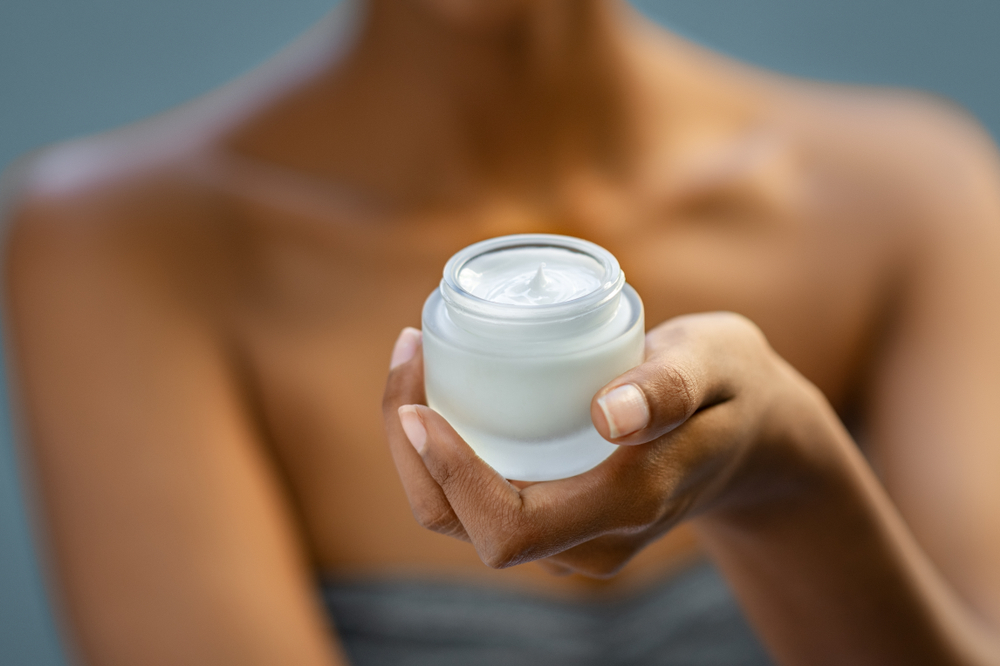When California dermatologist Dr. Laura Scott, MD, was a resident, she met with a new patient who sought medical advice for a rash located along her front hairline. The patient had met with three separate dermatologists, but none of the doctors offered an accurate diagnosis or treatment. However, after asking a few pointed questions, Dr. Scott immediately identified tinted edge-control gel as the problem.
As it turns out, the patient was an avid wearer of wigs. The other doctors instantly blamed it as the sole source of the irritation and instructed her to stop wearing them immediately. But unlike the others, what led Dr. Scott to the right diagnosis was actually pretty straightforward: she knew what edge-control gel was.
In this case, Dr. Scott was aware of a popular product that many Black women are known for keeping in their arsenals. She was also the only dermatologist willing to make time to listen to the patient and understand her styling preferences.
Stories like these are quite common for Dr. Scott, one of the few Black dermatologists in a field dominated by white doctors. Although recent data show that more than 13% of the U.S. population is made of people who identify as Black and African American, a study published in the Journal of the American Academy of Dermatology reveals that only about 3% of U.S. dermatologists are Black.
While the staggering lack of diversity in the medical field is nothing new, it does not dismiss the urgency of how racial bias within dermatology can actually have catastrophic and in some cases, fatal consequences. Among the many health disparities that Black people encounter – like being less likely to be given medicine for pain management or the frightening rate of Black women dying in childbirth – there are also gaps in dermatology, where the five-year survival rate for a Black patient diagnosed with melanoma (a common form of skin cancer), is only 65%, versus 90% for white patients.

Why are Black Dermatologists so Scarce?
No doubt, all dermatologists should have the education and training to treat any skin and hair they come in contact with. But for many African Americans, finding one that specializes in Black skin and hair can be almost impossible because with such a small part of the dermatology
community being people of color, the education, research and drug trials are controlled by the majority.
It is proven that visits, where the patient and doctor share an ethnic background will leave the patient more satisfied. With that in mind, researchers say that Black patients – a demographic that will grow to 15% by 2060 – are calling for dermatologists who are not only properly educated on how to treat their hair and skin challenges but also possess true cultural awareness, can show empathy for their condition and who acknowledge the deep-rooted biases that make them feel overlooked.
The need to increase the number of Black dermatologists is critical, and naturally, a simple solution would be just to recruit more Black doctors in order to better serve Black patients. However, it isn’t that easy. Most Black dermatologists say the need to dismantle some of the most fundamental barriers to entry into the field is a complicated prospect because historically, dermatology was considered a luxury Blacks didn’t have access to.
The Problem Starts in Medical School
Even today, ask any medical student and they will tell you that dermatology is one of the most fiercely competitive specialties to pursue because the road to medical accreditation is long and financially taxing. There are application fees, air travel for interviews, and low-paid seasonal research programs. “Most [minorities] are at a disadvantage,” says Dr. Scott in an interview with Refinery29. “In dermatology, you are expected to leave your
med school and spend a month at another program working. I couldn’t do that.”
Some minority students don’t have the extra money for private tutoring or away rotations when there are more crucial expenses at play, like rent. And if they don’t get into dermatology on the first try, then taking a year to do more research – valuable work that can bolster their résumés – can mean putting off full-time pay, a hardship most aspiring dermatologists can’t afford. And when it comes to debt repayment, the financial liability disproportionately affects Black students; they take on 85% more education debt than their white counterparts.
What’s more, biased, inaccurate learning tools like The Fitzpatrick Scale is a prime example of why dermatological discrepancies among Black patients are so prevalent. Introduced in 1975, it is a numerical classification system made up of six skin types that measure how each reacts to exposure to sunlight. As it stands, the scale currently states that Type 1 skin (the fairest) never tans and always burns. And the deepest hues (Type 6 being the darkest) do not burn at all – those of which, as explained by doctors like Dr. Lynn Mckinley-Grant, MD, FAAD, a board-certified dermatologist and professor at Duke University – are categorically false and potentially life-threatening information.
As the president of the Skin Of Color Society, a non-profit organization that advocates for improved education and awareness when treating people of color, Dr. McKinley-Grant explains to The Zoe Report why the Fitzpatrick Scale is an alarming rule of measure and how critical it is for doctors to train on every skin type: “It’s based on erroneous information because Black skin can burn and when it does, it burns badly,” she clarifies. “Certain conditions manifest differently on darker skin and it is vital to be able to identify them to avoid mistreatment and misdiagnosis.”

Cultural Awareness Makes a Difference
Mentorship is a major contributor to a budding dermatologist’s success. If Black children grow up exposed to Black dermatologists, they are more likely to take the field into account and will have access to the backers and
resources that support them. Many health organizations are recognizing this disparity, such as the American Academy of Dermatology Minority Mentorship Program, a one-on-one mentorship program that supports the careers of dermatologists from underrepresented backgrounds. They offer hands-on exposure to students by a dermatologist of the student’s choice. It offers stipends that help to pay for studies outside of primary institutions, like away rotations and summer research projects.
Moreover, the experts agree that improving cultural competence in all dermatologists is another effective way to bridge the race gap in dermatology. Recent data shows only 12.2% of program directors reported a rotation that offered specific training and experience in treating patients of color. Another survey shows that 47% of dermatologists felt their medical training did not prepare them to treat Black skin.
If a more heightened sense of awareness, empathy and a greater understanding of Black hair care practices and how to have these discussions was present, then things would change for the better. Thankfully, there are a growing number of resources that can assist in reaching that goal.








